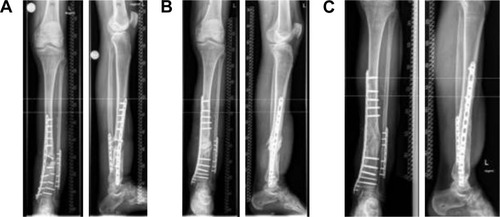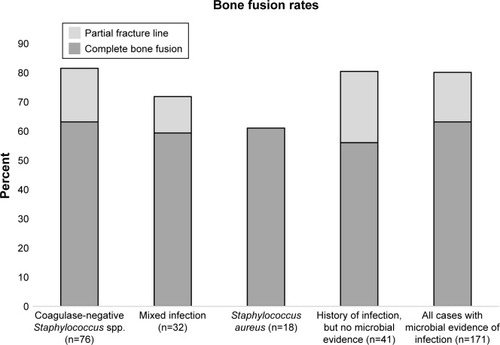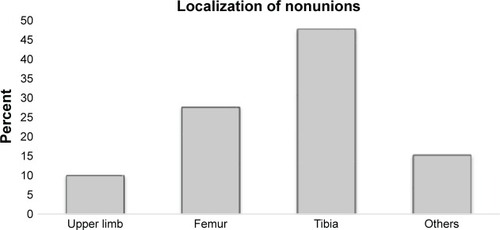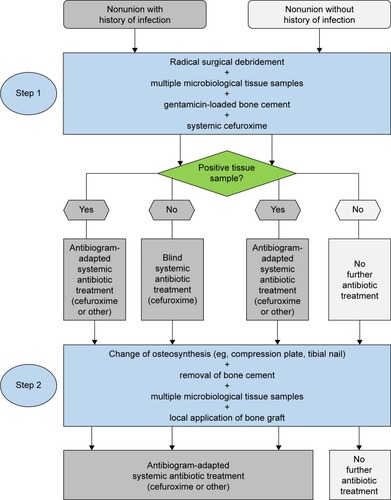Figures & data
Table 1 Detected species from tissue samples of all 171 infected nonunions with positive microbial evidence
Figure 3 Successful nonunion treatment after Masquelet technique.

Figure 4 Unsuccessful nonunion treatment after Masquelet technique.

Figure 5 Fusion rates (in %) of cases with infection with the 3 most frequently detected bacteria and cases without detected microbial infection compared to all 171 cases of infected nonunion with positive microbial evidence.




